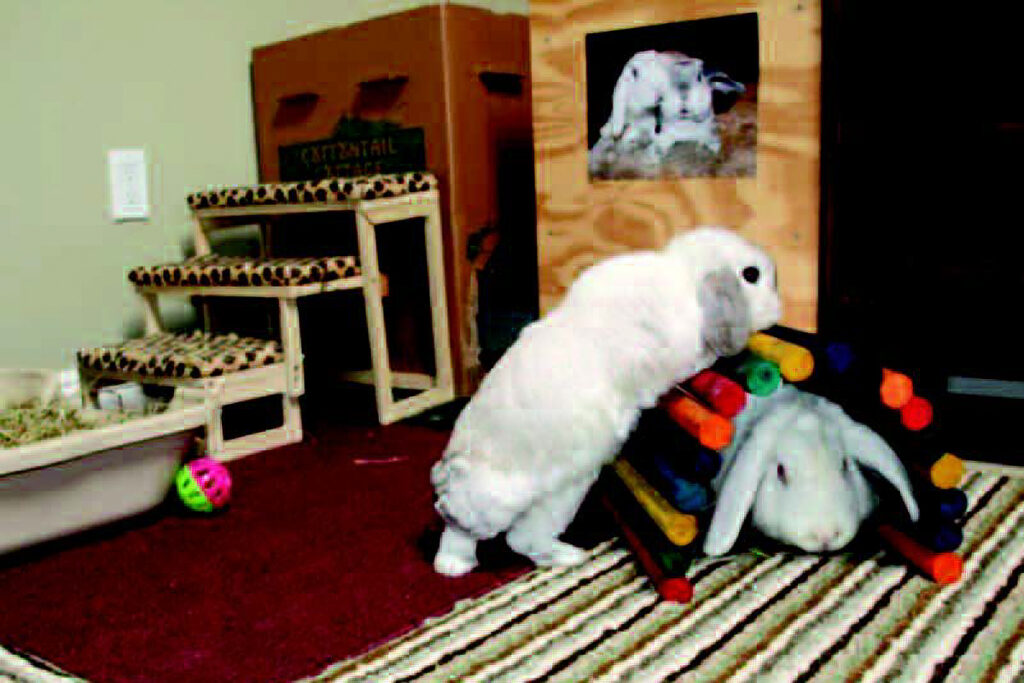preposition, n. A class of words that typically express a spatial or temporal relationship.
In another related article, Margo DeMello described rabbits at play, and offered ideas on providing toys that suit various temperaments. Here we will observe them at rest and suggest some rabbit-friendly nap, meditation, and general hang-out spaces. Even busy bunnies need an occasional break from their construction and deconstruction projects.
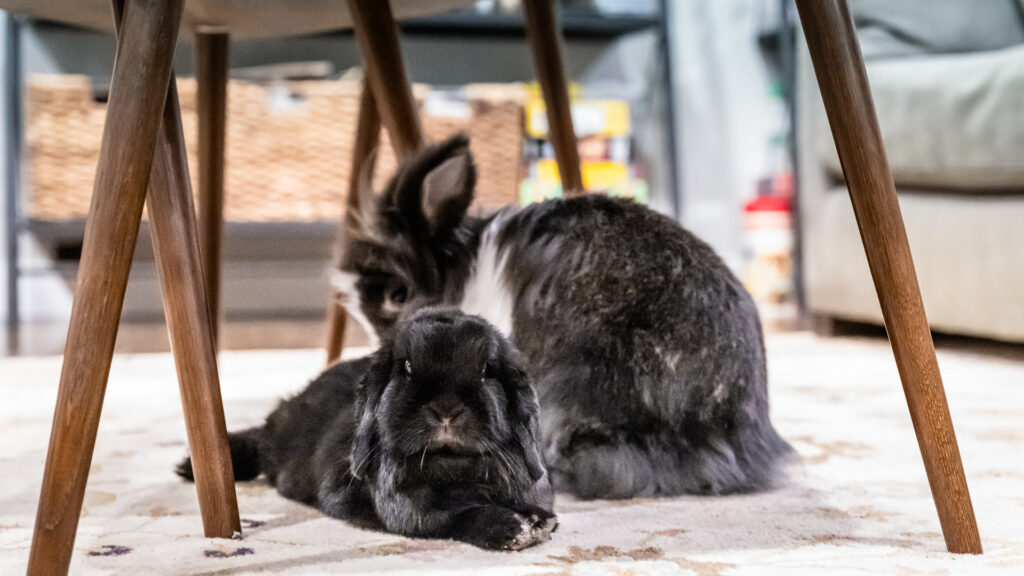
Where do rabbits generally go to feel at home in our homes? The answer is prepositional: on, under, beside, beneath. As in, on your comforter, under the bed, between the fridge and the oven, underneath the piano. Whether indoors or out, rabbits like some or all of the following: a dark burrow-like space, a place in the sun, and a lookout point that commands a view of their domain. Fluffy’s choice locations may pose some logistical or safety problems–how to get her out from under the stove or redirect her penchant for chewing the piano legs. You can bunny-proof her preferred space, and you can take a reading from it to provide a safer substitute.
“I REALIZED I HAD STUMBLED UPON INTERIOR DECORATING HEADQUARTERS FOR SMALL BURROWING MAMMALS.”
Oscar loved to be under the bed. In this private domain he could eat (the wood frame of the box-spring), dig (the carpet), and get some privacy for bathroom activities. Clearly this boy needed his very own fortress of solitude. I foraged the neighborhood supermarket and liquor stores, searching for the special box or boxes that would entice Oscar. I found several likely candidates, low-ceilinged but with plenty of horizontal space where a bunny could kick back. I stocked them with carpet squares, sea-grass mats, and shredded newspaper. I placed one next to the bed and barricaded his former hide-out. Oscar patiently, persistently, obsessively, and ultimately successfully, worked his way back to his sanctum under the bed. I had succeeded in providing him with physical and mental challenges, but clearly I had failed to include some crucial element of the underneath location in my alternative offerings. Back to the stores and then to the drawing board. I went through four set-ups, each more irresistible–or so I hoped–than the one before. Oscar penetrated every obstacle I placed between him and his goal.
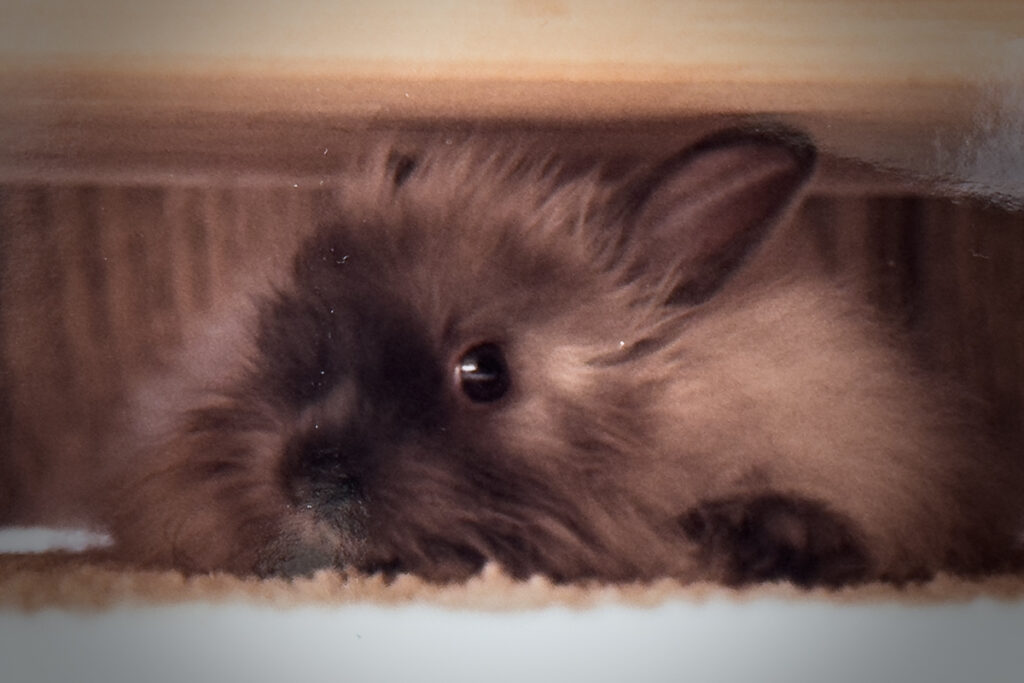
Luckily for my sanity, I happened to be helping a friend get ready to move across country. We went to a packing store for supplies. A store that sells boxes! Boxes everywhere, in all sizes and shapes, some thickly corrugated, others light and flexible. I realized I had stumbled upon interior decorating headquarters for small burrowing mammals. When I saw the mattress boxes, I knew they were Oscar material. That night I lined the box with the usual goodies, cut a few primitive pre-doors, and slipped it under our bed. It served as a perfect bunny-proofer for the bed, while at the same time permitting Oscar to be in his favorite place.
BOXES AND HIDE-OUTS AND FORTS–OH MY!
Since my original serendipitous visit I have become a regular at the moving store. If the clerks find it odd that I seem to be perpetually packing they are tactful about it. In addition to the mattress box I have found solutions for many housing problems. Albert, our between-the-stove-and-fridge rabbit, loves lamp boxes. These consist of two Albert-size squares at each end (used by normal people for the lamp base and shade) connected by a narrow Albert hall. I still opt for used, free boxes whenever possible, but the few dollars spent on a new one that is tailor made for a particular situation is well worth the price.
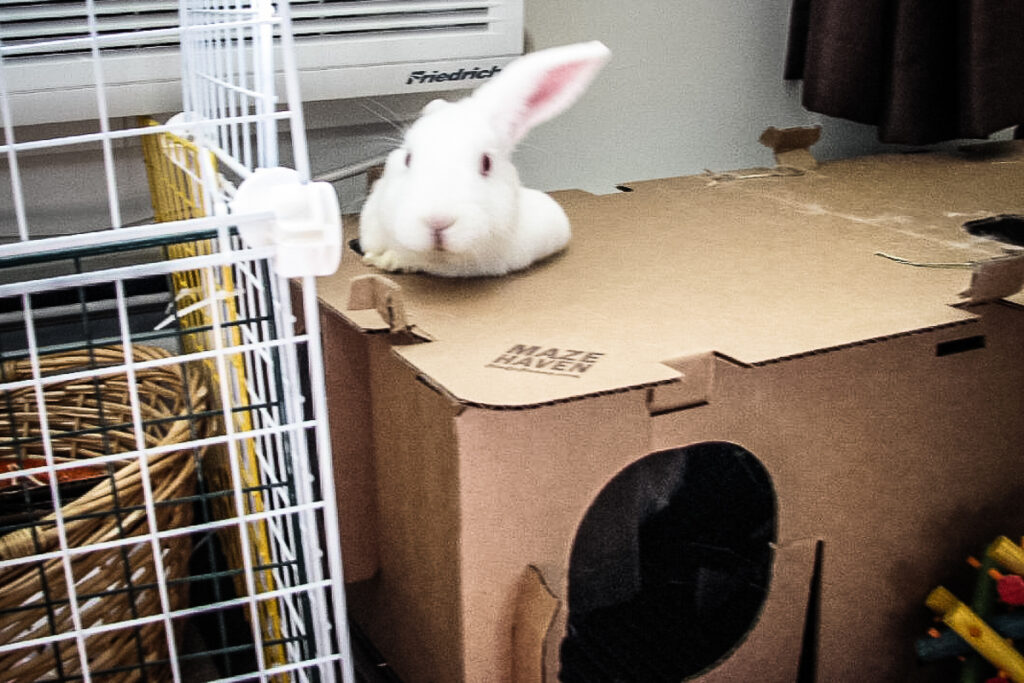
Very few rabbits will use a box with only one opening, vestigial wisdom from their wild forebears. A single predator can trap you if your burrow has only one exit. When preparing a box I cut at least two small flaps, leaving the bottom or one side of each flap attached to the box. The idea is to give her a starting point and let Daisy alter it to her own specifications. Novelty is a major asset, so inexpensive and easily replaced boxes are best. When I noticed that Chelsea, unlike most rabbits, grew fonder of her boxes with time, I built a wooden one to her specifications: long, narrow, and tunnel-like, with doors at either end plus one on the side. Her pal Peach nibbles it occasionally, but it’s still going strong one year later. For those who like to sit on as well as in, I wrap the box in an old towel for sure footing. This means that openings must be cut on opposite sides so that the wrapped towel doesn’t block one. An upside-down litterbox (use the largest one you can find) wrapped in a towel makes a sturdy sitting platform for rabbits who like to be on top of things. Some rabbits like spaces just big enough for them, while others feel claustrophobic if the box fits too snugly. Because the materials are so inexpensive, it’s easy to experiment, and fun to watch Scooter consider, try on, and alter your offerings.
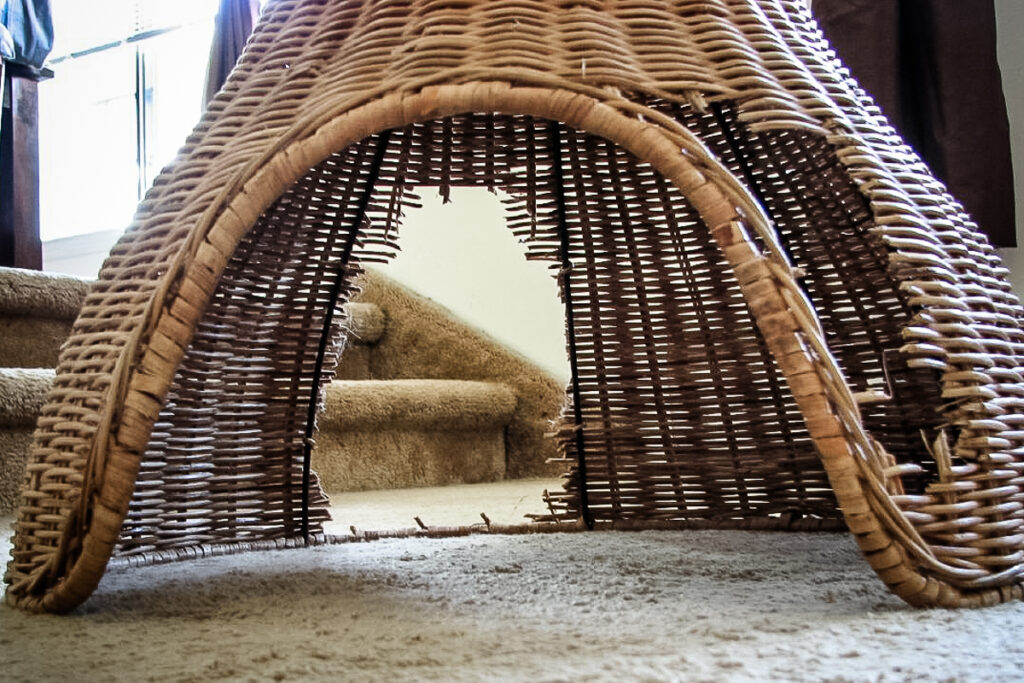
Import-export stores are another great resource. Everything that can be made of wicker or straw is sold there. You can stock up on toys as well as pieds-a-terres in an amazing variety of design. Of course most baskets are open on one side only, and if you try to cut a second door you’ll unravel the whole thing. One solution is to buy baskets that have handles. These can be turned upside down for Cosmo to use as a sort of beach umbrella.
ON COMMON GROUND (OR CARPET)
Most people who do animal rescue have multi-species households, and fosterers find rabbits playing with cat toys and eating dog biscuits. Cat furniture appeals to many rabbits. The carpeted or sisal-covered scratching posts provide plush and tasty hang-outs. Depending on their shape they may be enhanced by adding a towel. Cats and rabbits share a fondness for cozy tunnel-type spaces, and these are available at the pet-supply store.
Another feature of most rescuers’ homes is the gradual takeover by the animals of every part of the house. You start with one or two foster bunnies in the kitchen. Then you make room for a litter of orphan kittens in the bathroom. A hamster rescued from the children’s day-care moves in. These changes give rise to some daring design solutions. By draping just about any table or chair with a blanket (or, during warm weather, a sheet) you give Pepper a private world within any room of the house you choose. These under-the-table forts are favored by cats as well as rabbits, and during the long cold winter, ours gathered under blanketed tables and chairs to hibernate. *
©Copyright Amy Espie. All Rights Reserved. Republished with the permission of the author.
Places to Be was originally published in House Rabbit Journal Volume III, Number 7.
